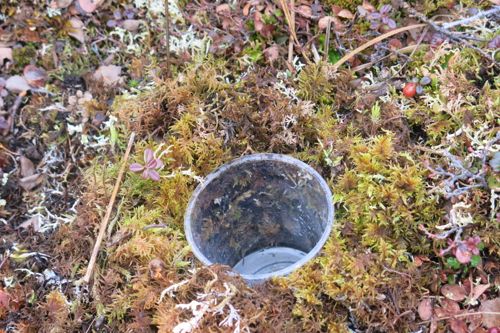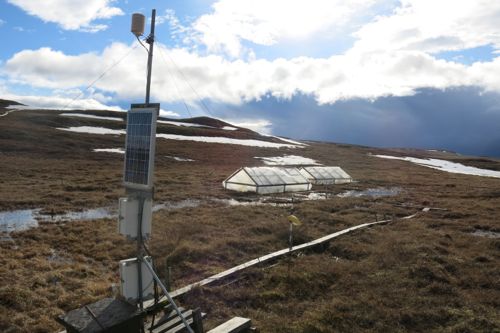With all the state and federally mandated testing, today's current educational paradigm seems to be "No Child Left Untested". Perhaps school districts and state boards of education should be held accountable to a new directive that could greatly improve not only STEM education, but any educational discipline. If your school is not already doing it effectively, it is time to consider "No Child Left Inside". Science is about understanding how the world works. To gain an understanding of such a thing requires that we actually get out into the world. What better way to learn than to see and do the real thing. Experiential learning programs in k-12 education can be difficult to conduct, but the value of such opportunities for kids is immense.
 Ashley Asmus describes some of the insect interactions in the tundra. Ashley works with the Toolik LTER or long term ecological research project.
Ashley Asmus describes some of the insect interactions in the tundra. Ashley works with the Toolik LTER or long term ecological research project.
Today a group of 8th grade students from Fairbanks visited Toolik with teacher Carol Scott. These Students were able to meet and learn from scientists of many disciplines. The group went into the field in search of nesting songbirds, they bored into the tundra to measure permafrost depth, they examined the tiny insects that pollinate and make up the tundra's invertebrate food web, and of course they caught arctic ground squirrels. These students saw first hand how polar scientists work. They learned about some of the probing questions scientists are trying to answer. The students asked lots of good questions themselves, proving that the experience was stimulating critical thinking and wonder. The students will spend 8 days on their trip, camping along the way. They are sure to never forget the experience.
 Marley Tran testing permafrost depth along a transect by boring into the soil.
Marley Tran testing permafrost depth along a transect by boring into the soil.
 Leslie Baker checking insect traps
Leslie Baker checking insect traps
Though logistics, planning and red tape make experiential programs a challenge, the positive outcomes reward the effort. Students, teachers and administrators should be asking how they can develop better opportunities for experiential learning.
 An insect trap to determine what lives in the tundra ground cover.
An insect trap to determine what lives in the tundra ground cover.
 Insects are important pollinators in the tundra.
Insects are important pollinators in the tundra.
 This experiment tests how the literal greenhouse effect causes soil warming and increased pant growth.
This experiment tests how the literal greenhouse effect causes soil warming and increased pant growth.
